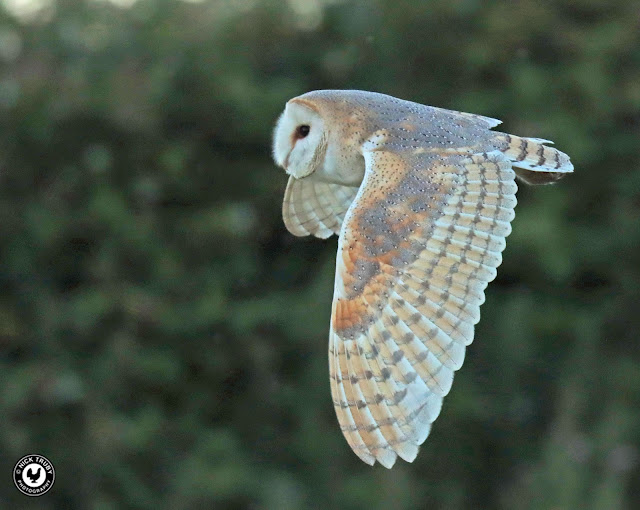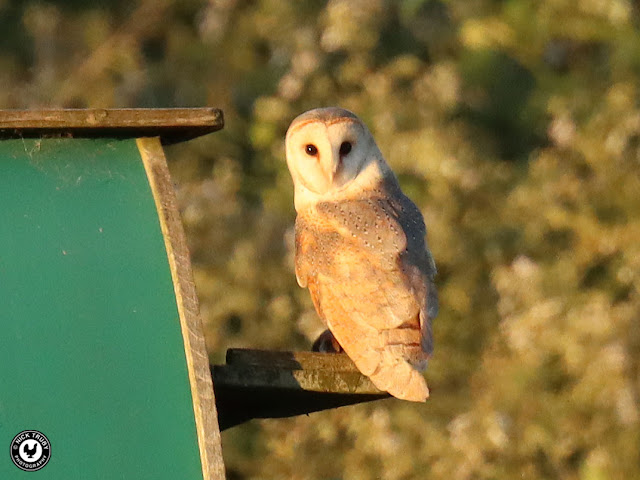July 2022 was a hectic, bird filled month. It's normally a month where little moves, known as the doldrums in birding circles when birds have bred and young have fledged and second broods are started. However, despite the birds being there, they have stopped singing and become hard to see in the lush vegetation. Luckily for the twitcher and year lister, it's also a good month for seeing rare birds and especially waders since they start their long migrations southwards after breeding high up in the Arctic.
Saturday 2 July
Beeline to Norfolk
For the second weekend running we resisted the urge to travel up to Bempton in Yorkshire to see the rarest bird that was on offer at the time. I can't remember why we did that but I have vague memory that the bird in question may have disappeared a couple of days previously before reappearing on another part of the Bempton Cliffs reserve over the weekend. So, instead we travelled to the furthest northeastern corner of Norfolk, and to a disused quarry near Cromer, where an RSPB watchpoint had been set up so that the public could view a small colony of Bee-eaters. The rainbow coloured birds from much further south, had nested in the quarry and could be seen with some dependability.
The day wasn't great weather-wise with largely grey skies and it was breezy stood at the viewpoint on the edge of the quarry. The Bee-eaters didn't disappoint though and we saw up to four of the technicolor birds busy themselves catching a variety of flying insects. We saw several snare dragonflies and butterflies as well as bees.
 |
| Bee-eater (Merops apiaster) |
Overhead wires were frequently used by the Bee-eaters where they often perched to ingest their catches. The sound of a Bee-eater is delightful and distinctive, and despite the wind they could be heard chattering away to each other. The nest site, apparently there were two active burrows in a sandy bank, could be seen but there was actually little activity indicating that birds were sitting on eggs.
Don't Forget the Honey!
For the past few years we had gotten our Honey Buzzard fix at Welbeck in Nottinghamshire. There is also a well known place in Norfolk, Swanton Novers near Fakenham, where Honey Buzzards can be seen, and some had been regularly seen over the preceding week or so. Presumably many of the Bee-eater watchers were visiting and adding the Honey Buzzards to their day lists as well.
We parked in the grassy carpark from where the woods can be viewed. It was a popular spot with maybe thirty over like-minded folk already in situ so any birds shouldn't go unnoticed. We only had to wait for twenty minutes or so before a female Honey Buzzard drifted into view. It was distant but close enough to gain some better than usual record shots.
 |
| Honey Buzzard (Pernis apivorus) |
Half an hour later a shout went up from behind us, 'Honey overhead!'. I looked up and for a few frantic seconds couldn't see anything. I followed the sights of others around me and realised that when the chap had shouted overhead, he meant, overhead! Literally fifty metres right above us was the same female Honey Buzzard that we'd seen before. I was gobsmacked. Never did I think that I'd get such close views of such a superb bird. The Honey Buzzard stayed circling overhead for a good ten minutes too. My arms were aching from holding the camera aloft. Wow!
An Extra Stint
While we watched the Honey Buzzard, a report of a Temminck's Stint was posted on BirdGuides. The bird was on the Serpentine at Cley Marshes just fourteen miles to the north. We were there within half an hour and our luck was in once more when we slotted into the only parking spot available in the east carpark. Five minutes later and we easily found the Stint feeding at the edge of the pool. It's always nice to get a bonus year tick and made up for missing out on one back in May. As far as Temminck's Stints go, we had a very good view as well with the bird pretty close and showing very openly. A nearby Pied Wagtail showed just how small the Stint is, as did a Black-headed Gull which entirely dwarfed the tiny wading bird.
 |
| Temminck's Stint (Calidris temminckii) |
Year List additions;
246) Bee-eater, 247) Honey Buzzard, 248) Temminck's Stint
Sunday 3 July
Bicester Wetlands at the Double
Two visits to our local reserve. We had chosen to stay close to home so dropped into the hide at the wetlands for an hour. It was a lovely sunny morning and there was lots of bird activity both on the pools and in the reedbed. The Tower Hide gives a perfect overview of the reeds and I watched a Reed Warbler busy itself with catching food for its offspring.
 |
| Reed Warbler (Acrocephalus scirpaceus) |
It was a beautiful morning and we had a nice and relaxing time while watching some of our more common birds which seemed to be just as chilled as we were. Sometimes it's nice to take things easier and to throttle back a bit.
 |
| Blackbird (Turdus merula) |
 |
| Dunnock (Prunella modularis) |
 |
| Small Skipper (Thymelicus sylvestris) |
The calm and tranquility didn't extend to a pair of Lapwings though who were angrily, it seemed, chasing each other around the scrape. The Green Sandpipers were far better behaved.
 |
| Lapwing (Vanellus vanellus) |
 |
| Green Sandpiper (Tringa ochropus) |
A Buzzard had also been busy fetching food for its own chicks and I spotted it carrying a vole as it flew over.
 |
| Common Buzzard (Buteo buteo) |
We returned to the reserve in the evening because Alan, the warden, had tipped us off that the resident Barn Owls had chicks in the Owl box. He wanted some photos so asked me if I could get some for him. We stationed ourselves at The Bittern Hide, so named because a long time ago and before my time, a Bittern spent a few days in a small patch of rough vegetation there. From there we were secreted from the Owls and had a clear view of the box. We had been watching for almost an hour and the sun had almost disappeared for the day when a Barn Owl suddenly appeared, perched on a fencepost about twenty metres away from the box, and with what looked like a young rat in its talons. The Barn Owl must have spent the day hidden elsewhere on the reserve, I guess with four healthy youngsters in the box that space inside was at a premium. The Barn Owl after having satisfied itself that the coast was clear, duly delivered the meal to the youngsters in the box.
 |
| Barn Owl (Tyto alba) |
The Barn Owl was a female, indicating that the young inside the box were old enough to swallow whole animals. My friend Ally who monitors Barn Owl nests under license, told me that up to eight days old the chicks require their food to be torn apart which is done by the female inside the box and all hunting up to that stage is done by the male. Once the chicks are large enough to deal with their own meals, the female hunts as well. After bringing in food, the female Owl always left by the same route which meant that it would fly straight past us and over the scrape and away over towards the building site that is Bicester.
The last of the sunlight went but we watched the female Barn Owl bring in at least five more rodents for its chicks. She would stop at the ledge of the box, or on a nearby post, and check all around before entering with the food.
At times the Barn Owl would pass just metres away from us which under good conditions would have resulted in superb photos but even in the low light the photos were passable and, at the least, atmospheric. Some of the images hardly needed any cropping especially towards the end of the session when the adult Owl began hunting the grassy field right by our position.










































No comments:
Post a Comment